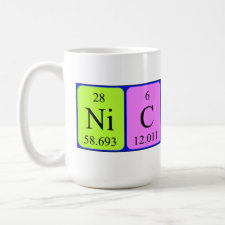
Authors: Culver HR, Clegg JR, Peppas NA
Article Title: Analyte-Responsive Hydrogels: Intelligent Materials for Biosensing and Drug Delivery.
Publication date: 2017
Journal: Accounts of Chemical Research
Volume: 50
Issue: (2)
Page numbers: 170-178.
DOI: 10.1021/acs.accounts.6b00533
Abstract: Nature has mastered the art of molecular recognition. For example, using synergistic non-covalent interactions, proteins can distinguish between molecules and bind a partner with incredible affinity and specificity. Scientists have developed, and continue to develop, techniques to investigate and better understand molecular recognition. As a consequence, analyte-responsive hydrogels that mimic these recognitive processes have emerged as a class of intelligent materials. These materials are unique not only in the type of analyte to which they respond but also in how molecular recognition is achieved and how the hydrogel responds to the analyte. Traditional intelligent hydrogels can respond to environmental cues such as pH, temperature, and ionic strength. The functional monomers used to make these hydrogels can be varied to achieve responsive behavior. For analyte-responsive hydrogels, molecular recognition can also be achieved by incorporating biomolecules with inherent molecular recognition properties (e.g., nucleic acids, peptides, enzymes, etc.) into the polymer network. Furthermore, in addition to typical swelling/syneresis responses, these materials exhibit unique responsive behaviors, such as gel assembly or disassembly, upon interaction with the target analyte. With the diverse tools available for molecular recognition and the ability to generate unique responsive behaviors, analyte-responsive hydrogels have found great utility in a wide range of applications.In this Account, we discuss strategies for making four different classes of analyte-responsive hydrogels, specifically, non-imprinted, molecularly imprinted, biomolecule-containing, and enzymatically responsive hydrogels. Then we explore how these materials have been incorporated into sensors and drug delivery systems, highlighting examples that demonstrate the versatility of these materials. For example, in addition to the molecular recognition properties of analyte-responsive hydrogels, the physicochemical changes that are induced upon analyte binding can be exploited to generate a detectable signal for sensing applications. As research in this area has grown, a number of creative approaches for improving the selectivity and sensitivity (i.e., detection limit) of these sensors have emerged. For applications in drug delivery systems, therapeutic release can be triggered by competitive molecular interactions or physicochemical changes in the network. Additionally, including degradable units within the network can enable sustained and responsive therapeutic release. Several exciting examples exploiting the analyte-responsive behavior of hydrogels for the treatment of cancer, diabetes, and irritable bowel syndrome are discussed in detail. We expect that creative and combinatorial approaches used in the design of analyte-responsive hydrogels will continue to yield materials with great potential in the fields of sensing and drug delivery
Template and target information: Review - analyte-responsive hydrogels



Join the Society for Molecular Imprinting

New items RSS feed
Sign-up for e-mail updates:
Choose between receiving an occasional newsletter or more frequent e-mail alerts.
Click here to go to the sign-up page.
Is your name elemental or peptidic? Enter your name and find out by clicking either of the buttons below!
Other products you may like:
 MIPdatabase
MIPdatabase









